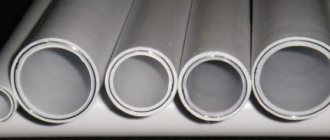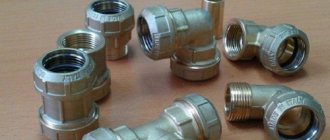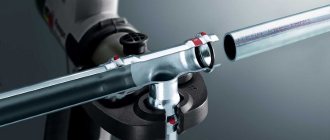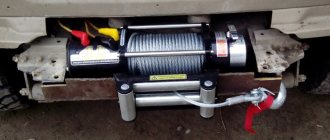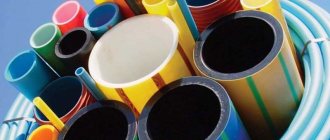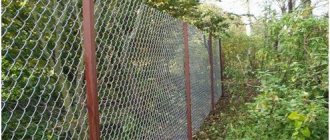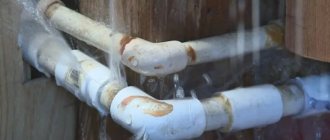- Introduction
- Advantages and disadvantages of HDPE pipes for installation
- Technical characteristics of HDPE pipes
- Types of HDPE pipes
- Scope of use of HDPE pipes
- Methods for connecting HDPE pipes during installation
- Necessary for installation of HDPE and PE pipes
- Step-by-step instructions for installing HDPE pipes with your own hands
- The process of welding pipes during installation
- Use of fasteners for HDPE pipes
- Common mistakes when installing HDPE pipes
- Ordering and purchasing products at wholesale prices
Advantages and disadvantages of HDPE pipes for installation
HDPE pipes certainly have a lot of advantages - that’s why they are so common both in everyday life and in industry. Along with this, they also have some disadvantages.
Advantages of HDPE pipes:
- long service life - most reliable manufacturers provide a 50-year warranty on their products;
- chemical resistance. Communications made from HDPE are not exposed to aggressive substances;
- corrosion resistance;
- resistance to water hammer;
- ease of installation of HDPE pipes. They are easy to cut, and thanks to special fittings, assemble the pipeline even without professional skills;
- there is no need to use additional devices for insulation and protection;
- resistance to low temperatures. Due to their high elasticity, pipes do not crack even with repeated thawing/freezing cycles;
- the walls of HDPE pipes have a smooth surface, and silt and sediment do not accumulate on them;
- low thermal conductivity - no condensation occurs on the outer part of the pipeline;
- pipe connections do not deform over time;
- light weight;
- polypropylene does not conduct electricity;
- ease of maintenance;
- high strength and ductility;
- affordable cost and savings on transportation.
We list the disadvantages of this type of pipe:
- low heat resistance. The HDPE product can only be used to transport liquids whose temperature is no more than +60°C. They are not suitable for heating systems;
- polyethylene waste decomposes within at least 100 years;
- the appearance of such pipes may not fit into any interior design;
- reinforced products have little flexibility, which complicates installation;
- low resistance to UV radiation. In the sun, the material gradually deteriorates, so it cannot be laid outdoors without special boxes or covers;
- low resistance to strong shock loads.
Chemical and electronic methods of cross-linking polyethylene
Various options for “cross-linking” layers of polyethylene ensure their performance characteristics. Initially in the manufacturing process, the stitching method is used, due to its low cost. The low strength of the polyethylene layer obtained in this way made the technology irrational.
Adding peroxides to heated polyethylene at the stage of “cross-linking” the pipe layer during its manufacture makes it possible to create a fairly strong structure. The method is common for creating pipes used in low-pressure water supply systems to supply cold water.
Cross-linking at the molecular level with an interpenetration quality of at least 65% is ensured by a chemical method. A mixture of catalysts and silane is added to the polyethylene layer; in this way, PE-S pipes are made.
Markings containing data on the purpose and technical characteristics of the product are applied to the outer surface of the pipe.
“Bombardment” of a polyethylene layer with electrons allows molecules to be stitched into a three-dimensional network with almost 100% interpenetration. The method is the most effective and quite complex, and therefore expensive. This is the best option for a polyethylene pipe for water supply. Do-it-yourself installation of such products can be done as easily as other types of plastic pipes.
Important! International indices indicating the crosslinking option are indicated in capital letters in the index: PE-Ha or PE-Xb. For a country water supply system assembled with your own hands, it is quite enough to use low-pressure HDPE pipes. If pipes that can withstand high temperatures are used, the cost of the project increases significantly.
Technical characteristics of HDPE pipes
HDPE pipes must be manufactured in accordance with the requirements of GOST 18599-2001. The characteristics of the products determine their areas of application, features of HDPE installation;
- Material: low pressure polyethylene.
- Maximum operating pressure is 16-20 atm.
- Diameter - from 10 to 1200 mm.
- Operating temperature - from -20 C to +40 C.
- The temperature range that HDPE can withstand is from -70C to +80C.
- The inner surface is smooth.
- Tensile strength - 38 MPa.
- Service life - from 50 years.
- The length of the pipe sections is 6, 12 meters.
Important! Such products can be supplied either in ready-made sections or in coils.
The technical characteristics of a particular product can be determined by the markings applied to the surface. It should be checked before installing the water supply system. It states:
- manufacturer;
- material of manufacture;
- Wall thickness;
- diameter;
- maximum pressure;
- type of work environment.
Types of HDPE pipes
Pipes made from low-pressure PE materials offered on the building materials market are divided into several types according to different criteria.
By purpose:
- plumbing;
- gas;
- sewer;
- drainage;
- irrigation;
- casing;
- technical.
By properties:
- non-pressure, for which there are no special load requirements;
- low-pressure, withstanding internal pressure up to 5-6 atm.;
- high-pressure, which can withstand pressure up to 16-20 atm.
Important! Separately, we can highlight products that are used for installation in vacuum conditions.
The installation of HDPE pipes must be carried out taking into account the diameter, which can vary from 10 to 1200 mm, which means that such products can be used for transporting liquids of different types and qualities.
Scope of use of HDPE pipes
Pipes made of low-density polyethylene are used to install the following types of communications:
- cold water supply networks;
- sewerage for various purposes;
- electricity supply;
- wastewater disposal;
- gas pipeline
Important! Corrugated HDPE pipes with a wire frame are most often used in the implementation of water supply networks - they provide insulating and protective functions. They can also be used to assemble both pressure and non-pressure sewer systems.
Depending on the purpose of the pipeline, installation of HDPE fittings and the pipes themselves is carried out in different ways. For example, fittings are usually sufficient for water supply, but sewerage must be installed using a strictly socket method, i.e. the pipes must be inserted into each other. A rubber ring is used to ensure sealing.
Price for work
The price for installing a water supply system varies depending on the type of pipes, installation technology, and scope of work. Average prices are summarized in the table:
| No. | Name | Unit | Quantity | Price, rub. |
| External water supply | ||||
| 1. | Laying HDPE pipes ǿ 100 mm | m | 1 | 360 |
| 2. | Installation of elbows, bends, transitions, pipes | PC. | 1 | 450 |
| 3. | Installation of tees | PC. | 1 | 800 |
| Internal water supply | ||||
| 4. | Laying a pipeline from turnkey pipes ǿ up to 32 mm | m | 100 | 4500 |
| 5. | pipeline made of HDPE pipes with a diameter of less than 20 mm | m | 100 | 7600 |
| 6. | -“- pipes up to 63 mm | m | 100 | 6100 |
| 7. | -“- up to 90 mm | m | 100 | 6400 |
| 8. | -“- up to 110 mm | m | 100 | 6900 |
In the future, polymer pipes will replace their metal counterparts. And which polymer to choose HDPE, LDPE or PVC depends on the purpose of the water supply and power.
Methods for connecting HDPE pipes during installation
The connection of HDPE pipes can be detachable or permanent. Each type allows you to create a strong and reliable structure, but at the same time, each of them has its own advantages that should be taken into account when installing HDPE with your own hands.
Detachable connection type
When using a detachable type of connection, a structure is created that can subsequently be dismantled. This method is considered the most popular, since the pipeline is easy to install without special equipment, and subsequently disassembled. Pipe connections are made quickly, which does not affect their quality.
Using fittings
A fitting is a connecting element of a water supply system, which is used for installing HDPE in the areas of joints, turns, as well as increasing and decreasing the diameter. The design features of the fittings lie in the simplicity of every detail. All products have a different type of body with the required hole diameter.
- Installation of the pipeline using fittings is carried out in 4 stages:
- Fitting. The fitting of the required type and size is selected, and the depth to which the pipe parts will be inserted is determined. Appropriate notes are made. The bevel is cut on the pipe using a knife or a bevel remover.
- Preparation. The edges are moistened with a soap solution or liquid soap to subsequently check the tightness.
- Installation. The union nut is unscrewed and the pipe is installed in it to the mark made in advance.
- Fixation. The fitting nut is tightened until it stops, but care must be taken to ensure that no pinch occurs.
Types of detachable fittings for HDPE pipelines
Fittings can vary in purpose and location of attachment. Most in demand:
- Straight. Required for connecting pipe sections of equal diameter.
- Compensatory. Necessary in situations where it is necessary to connect pipes of different diameters.
- Adapter. Required for connecting HDPE to products made from other materials.
- Tee. It is used in places where two or more should come out of one pipe.
- Corner. Necessary for areas where pipe rotation is required.
- Stub. Mounted where the pipe is interrupted.
By installing a flange
Most often, such connections are used for pipes with a diameter of 100 mm or more. This technology involves the use of slip-on flanges, which are placed at the ends of the pipes. They can also be welded to the pipe and connected to bushings. Suitable seals are used to prevent leakage between the joint flanges.
The first of the flanges is mounted on the metal end of the pipe, and the second flange, accordingly, is fixed with a plastic collar to the plastic end. To obtain tight connections, it is important to install the seal correctly. The bolts must be properly tightened so that the stress is distributed evenly throughout the entire part.
Permanent connections
Performed by welding. This method ensures completely sealed joints and at the same time high reliability, but its implementation is impossible without special equipment - a welding machine. Also in some cases it is not used due to external conditions: for example, water in the pipe.
You can learn about all the nuances associated with permanent connections from the corresponding article on our website - Welding of polyethylene and HDPE pipes and do-it-yourself installation.
Electrofusion connections
Electric couplings are made of HDPE and have a metal heating coil inside. The pipes to be connected are installed in the coupling, and then voltage is applied, as a result of which the coupling and the workpieces are heated and welded. This is a fairly simple and convenient method of welding, but also expensive. For large diameters, the cost of the coupling may be more expensive than the pipes themselves.
Before carrying out work, thorough cleaning of the pipes is required, as well as ensuring immobility during heating and cooling.
Socket connection method
The most economical method, since it does not require the cost of welding or purchasing fittings. This method is only suitable for non-pressure pipelines, since sufficient tightness of the connection cannot be ensured. To increase it, silicone or rubber elastic cuffs are used.
The socket method involves installing the narrower end of one pipe into another, i.e. the heated shoulder (smooth end) is inserted into the heated mounting thickening.
Butt welding - work technology
Butt welding of polyethylene pipes
The peculiarity of this method is that such welding is used to connect pipes whose cross-section is greater than 50 mm, and their thickness exceeds 5 mm. This method cannot be called simple, since it requires a special welding machine and some skill in working with it. How are pipes connected by welding? The order of work is as follows:
- To begin with, the master aligns the edges of the pipes, cuts them at right angles and carefully cleans them.
- Using a welding machine, the ends of the pipe are heated to the melting temperature and quickly connected.
- All that remains is to wait until the seam cools down and becomes secure.
- Finally, it is important to check the tightness of the connection by filling the pipe with water.
When carrying out such manipulations, it is very important to monitor the heating time of the product in order to make it ideal for joining and not to overmelt or not heat it enough. The pressure on the surfaces to be joined is also important, since to ensure maximum strength of the connection, it must be uniform along the length.
Butt welding machine
Note!
You should not try to weld products from different manufacturers together. Their characteristics may vary slightly, so during operation, water pressure may tear the seam made in this way.
Necessary for installation of HDPE and PE pipes
To install HDPE pipes for water supply, in addition to the pipes themselves, you will need fittings and equipment.
Fitting
To install HDPE pipes with your own hands, you need fittings. Fittings are:
- Welded fittings. Typically used for installation of pipes at bends in pipelines. Allows you to weld several parts into a single whole.
- Compression fittings. They allow you to install the pipeline without welding and significantly save both money and installation time.
- Electric welding fittings. Made from high quality low pressure PE. They are used for installing HDPE pipes, mounting fittings, and are equipped with electric heating elements - a metal spiral or wire.
You can purchase fittings, HDPE pipes and everything necessary for installation in the Plastproduct catalog at manufacturer prices.
HDPE, PE pipes
The catalog contains a wide selection of HDPE and PE pipes, including:
- Pipes for cold water supply. Manufactured in accordance with GOST 18599-2001. Installation of HDPE pipes for water supply is usually carried out in a closed manner.
- HDPE gas pipes. Produced in accordance with GOST R 50838-2009. Used to transport flammable gases used as raw materials and fuel. Installation and connection can be carried out using butt or electrofusion welding.
- Pipes for hot water supply and heating. Manufactured according to GOST 32415-2013. Used for transporting water in hot water supply and heating systems. The operating temperature of such pipes is up to +80°C.
- Double-layer corrugated pipes with socket SN8. Suitable for organizing culvert pipelines - sewer, drainage. Durable and resistant to various influences.
Equipment
When choosing some connection methods, you cannot do without high-quality equipment - welding machines. You can choose a reliable model from the manufacturer ProWelder at a competitive price in the catalog:
- Hydraulic welding machines. These are small, fully electric devices that make it possible to reliably weld pipes with ease and in a matter of minutes and subsequently install HDPE pipes with your own hands. There are more than 10 models to choose from.
- Mechanical welding machines. Such welding equipment is designed for durable welding of pipes. It differs in that the parameters are set by the operator independently, while the welding procedure is carried out manually.
Benefits of using compression fittings
Correct installation of compression fittings for HDPE pipes will ensure a tight joint in polyethylene pipelines. Among the advantages of using these structural elements are:
- ease of assembly and installation - all work on the installation of plumbing structures is carried out quickly, because the installation of compression fittings does not require preliminary preparation of pipes;
- such a connection does not require special preparation - all work can be carried out independently;
- the structures are not only easy to assemble, but also easy to repair - all repair work with fittings is characterized by high speed of execution, since they do not require a specific tool and do not require the implementation of special technologies;
- possibility of repeated use - compression fittings, through which the HDPE pipeline is assembled, can be installed and then disassembled as many times as desired. In practice, it is believed that installation/dismantling of such structures can be carried out up to 10 times, and the connection will not lose its reliability;
An example of using HDPE fittings when installing a summer water supply system - stability, immunity to corrosion - such fittings are produced from materials that, regardless of temperature and operating conditions, do not interact with water. Damage associated with corrosion processes is excluded in this case;
- versatility - these types of fittings can be used for various types of plumbing systems;
- high levels of quality, safety and hygiene, which allows the use of these devices on drinking water supplies without restrictions.
Step-by-step instructions for installing HDPE pipes with your own hands
You can successfully install HDPE pipes yourself if you follow the technology, as well as after becoming familiar with the nuances of this process.
Preparatory process before installation
Before you begin installing a water supply system, you should develop a diagram. It should take into account existing water consumption devices (sink, bathtub, toilet, washing machine, etc.). This will allow you to calculate in advance how many pipes, adapters and fittings you will need to purchase.
The next step in the preparatory process is to thoroughly prepare the work area. In advance, you need to dismantle the failed system, if any, prepare and check the functionality of the tools. Before starting work, you must turn off the water supply. If the water supply is being replaced in an apartment building, it is necessary to coordinate the work with the other residents in the entrance.
Tools
To connect and install HDPE fittings and polyethylene pipes, the following tools and materials are required:
- hammer drill - necessary for drilling holes in ceilings;
- grinder - if you need to dismantle the old water supply system;
- pipe cutter or construction scissors - for cutting pipes;
- hammer;
- locksmith's keys;
- fitting;
- welding machine;
- metal ruler;
- fum tape;
- building level to check the correct installation on the horizontal and vertical axis;
- calibrator;
- gloves.
Straightening the HDPE pipe
Typically, pipes are sold in coils, so you can’t do without straightening them before installing a water supply system from HDPE pipes yourself. You can solve the problem using a hair dryer:
- if the diameter of the pipe is small, it is necessary to direct a stream of hot air at it and gradually level it manually;
- with a larger pipe diameter, you can supply hot air from a hair dryer directly inside it - this will make straightening more effective. The pipe, due to its own weight after warming up, will begin to level itself.
It is important not to overheat the pipe or bend it, as this may render it unusable.
Another effective method is straightening under the sun's rays. It is more suitable in the warm season, when the sun is quite active. It is necessary to lay out the desired section of pipe, fixing it at the beginning, at the end and along the length, so that ultraviolet rays fall on it. As a rule, 10-12 hours are enough for the pipe to level.
In the video, straightening technology is explained in more detail.
Video on how to connect HDPE pipe and fitting
To install HDPE pipes with your own hands when installing a water supply system, you can use connection technology that involves the use of compression fittings. There are several methods, but the following is considered the simplest and most effective:
- It is necessary to prepare the pipe by making a perpendicular cut. There should be no dirt or burrs on it.
- The fitting must be unscrewed by removing the blue nut.
- The O-ring must be placed in the fitting with the black washer inserted on top.
- The end of the pipe must be treated with a bevel remover and then applied with silicone grease.
- The fitting is placed on the pipe and secured with a white ferrule. After this, the blue nut is tightened.
- In order for the connection to be sufficiently reliable, it is necessary to tighten it with keys. It is better to use gas ones. Installation completed.
This method is shown more clearly in the video.
Do-it-yourself HDPE pipe installation
Do-it-yourself installation of HDPE pipes at your dacha can be done according to the following instructions:
- The water supply in the garden must be connected to a source - this can be either a common pipe or a standpipe. To connect, you need to use a special adapter, and be sure to equip it at an angle.
- Distribution to the water intake points is carried out throughout the area of the site where the water supply system is planned to be installed.
- Preparation of trenches, the depth of which should be at least 20 cm below the soil freezing level.
- Connecting pipe sections using fittings of the required type according to the instructions given above.
- Connecting pipes to taps, irrigation systems on site, etc.
Important! Before digging trenches, it is worth running water through the main line to check to ensure there are no leaks at the joints. It is also recommended to mark the locations of the pipeline to avoid damage to the pipes when working on the site.
The video below describes in detail the process of implementing a water supply system on a site with your own hands.
Fitting design
How easy the upcoming assembly is can be seen by paying attention to the design of a product such as a fitting. Regardless of the manufacturer, it practically does not vary, differing only in the quality of the materials used, as well as the accuracy with which the Ø of the inner rings was selected.
If you purchase a low-quality product, you won’t be able to wait for normal installation of the entire system yourself. Therefore, when purchasing, try to check the parts that make up the product:
Pipe fitting
- Frame. It should not have any damage.
- Sealing ring. Most often made of rubber. Unfortunately, it is unlikely that it will be possible to check the quality of the composition used before making a purchase. But you have the opportunity to do a visual inspection, this part should not be too narrow. The ring should feel medium hard to the touch.
- Compression ring.
- Clamp ring.
- A similar one, namely a clamping nut.
In order to ensure the proper quality of the connection, try to turn it with good acceleration. If the inertia is small, then you have been offered a quality item.
Use of fasteners for HDPE pipes
Reliable operation of the pipeline and absence of leaks can be ensured by proper fastening of HDPE pipes during their installation. Fastening elements allow you to avoid displacement of the line and weakening of detachable units.
When installing a HDPE pipeline in a house or country house, you can use special clamps, hooks, plastic clips or dowels to secure all components of the pipeline.
When installing HDPE pipes - installing a water supply system, it is important to fix each joint. It is recommended to place fasteners in increments equal to the pipe diameter x10. Thanks to them, both the pipes and fittings themselves will be protected from damage.
Pipe laying method
The summer method of ground installation is used for watering shrubs, trees and vegetable gardens. It provides water supply for baths, gazebos, and summer kitchens.
HDPE pipes are distinguished by their mobility; they bend easily and maintain a given configuration.
It is worth noting that surface laying of pipes is suitable for the summer season. After completion, the pipes should be disassembled, folded and stored in a hidden place. This will help prevent the material from being stolen.
Common mistakes when installing HDPE pipes
Often, if the technology and instructions for installing HDPE pipes are not followed, mistakes are made that can lead to the inoperability of the entire pipeline. Let's look at the most common installation errors:
- The distance between the points where the fasteners are located is chosen incorrectly. Sagging pipes can cause connections to break.
- Welding is not done correctly. This mistake is often made by beginners, so before starting work it is important to carefully study the features of the method.
- When installing a pipeline, linear expansions are not performed, and increased pressure significantly reduces the service life of the pipes.
- Pipes are cemented without insulation. In this case, there is a high probability of condensation forming on their surface.
- Fittings are overtightened. Such an error can lead to disruption of the entire system.
Preparation for work
To ensure that the process takes you as little time as possible and is carried out without mistakes that will be difficult to correct in the future, you need to pay attention to some points in advance:
- check that you have a sufficient quantity of both basic materials and related products;
- draw a plan according to which the system will be installed;
- make markings and start cutting.
Only then proceed to the main part of the installation.
Pipe installation
Ordering and purchasing products at wholesale prices
The technology for installation and welding of HDPE pipes and fittings must be strictly observed - only in this case the equipped system will serve for decades, without requiring repairs or maintenance. However, in addition to strictly following the instructions, the quality of the pipes and fittings themselves also plays a big role.
is one of the largest manufacturers of pipes and equipment in the Far Eastern region. Production is carried out in our own production from high-quality foreign raw materials. Thanks to strict quality control, all types of products meet safety and reliability requirements, which is confirmed by relevant certificates and licenses.
We offer to purchase HDPE pipes, fittings, welding equipment and other products at wholesale prices from the manufacturer. The cost of a wholesale batch of goods is calculated for each client individually by the manager of our company. We guarantee exceptionally favorable prices for you and high quality of all products. You can send a request or ask clarifying questions using the feedback form or the telephone numbers listed on the website.
